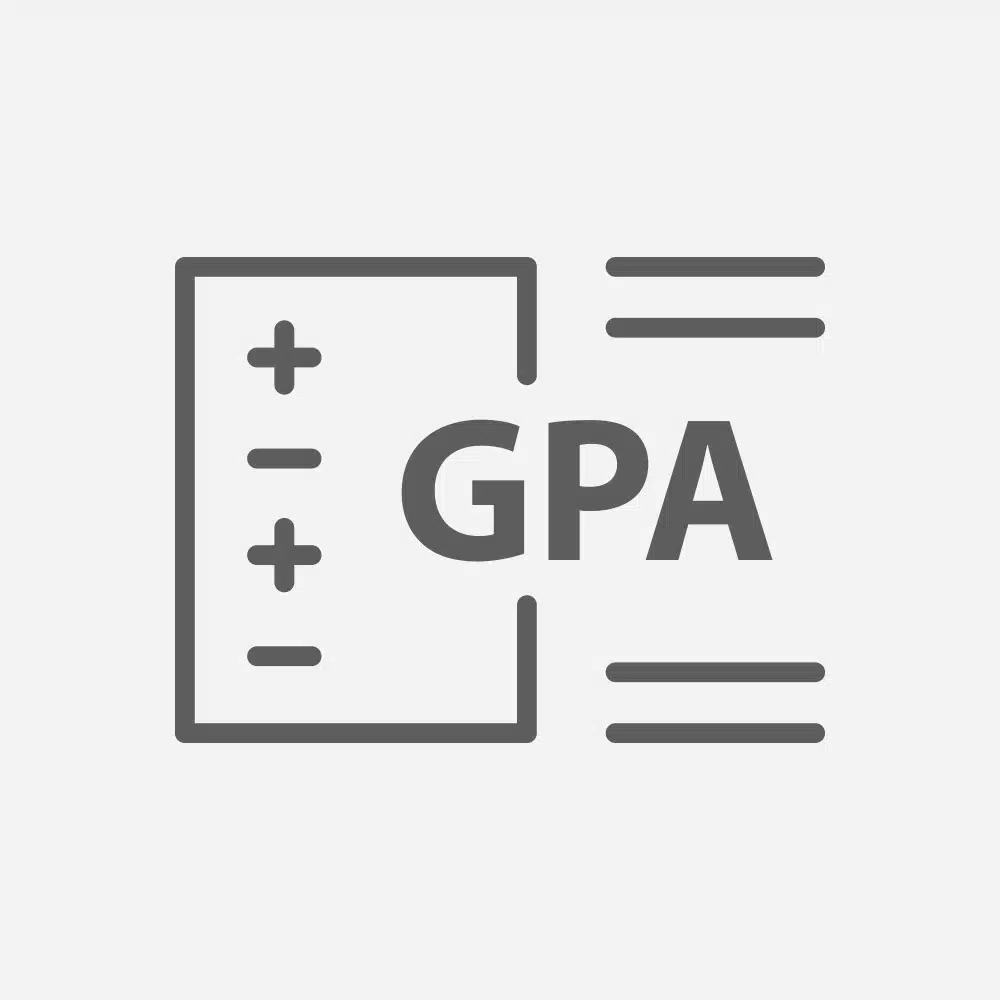Is It Possible To Get A 5.0 GPA?
The question of whether it’s possible to achieve a 5.0 GPA is common among high-achieving students. This seemingly unreachable goal, in the eyes of most, stands as a testament to academic excellence. But is it actually attainable, and is it possible to get a 5.0 GPA?
Understanding the GPA System
To navigate this topic, it’s essential first to understand the fundamentals of the GPA system. GPA stands for Grade Point Average, a standardized method of calculating a student’s academic achievement in the United States and several other countries.
When it comes to understanding the GPA system, there are several key aspects to consider. Let’s delve deeper into the topic to gain a comprehensive understanding.
The Basics of GPA
A GPA is determined by assigning point values to grades earned in courses and then calculating the average. Each class’s letter grade is assigned a numerical value; for instance, an ‘A’ typically equates to 4.0 points, a ‘B’ to 3.0 points, and so on. This system is utilized to provide a numeric representation of a student’s overall academic performance.

However, it’s crucial to note that your GPA is not just a single number. It is the sum of these numbers divided by the total number of courses taken. This calculation gives a better insight into your average performance throughout your academic journey.
Moreover, the GPA system allows colleges and universities to assess a student’s academic capabilities and potential. It serves as a benchmark for evaluating applicants and determining their eligibility for admission.
How is GPA Calculated?
Knowing the basic concept of GPA calculation is helpful, but there’s more to the story. Anything above a ‘C’ (which typically equates to 2.0) adds to your GPA, while any grade below that can pull it down. Notably, remedial courses or courses taken on a pass/fail basis might not be included in this calculation.
Additionally, different institutions may have variations in their GPA calculation methods. Some schools may use a weighted GPA system, while others may use an unweighted system. The specific method for calculating GPA varies by educational institution or system, but the base premise generally remains the same.
Understanding how your GPA is calculated is crucial for setting academic goals and tracking your progress throughout your educational journey. It allows you to have a clear understanding of where you stand academically and what steps you need to take to achieve your desired goals.
The Role of Weighted and Unweighted GPAs
Weighted and unweighted GPAs are two different methods that schools use to calculate GPAs. The key difference lies in how they take course difficulty into account.
An unweighted GPA ignores course difficulty and assigns the same value to all grades. This means that an ‘A’ in a regular class carries the same weight as an ‘A’ in an advanced or honors class. On the other hand, a weighted GPA assigns more value to grades earned in advanced or honors classes, acknowledging the additional challenge these courses may present. This distinction can sometimes be the factor that enables students to achieve a GPA over 4.0.
It’s important to note that the decision to use weighted or unweighted GPAs often depends on the policies and practices of individual schools. Some institutions may only consider unweighted GPAs, while others may take both into account. Understanding how your school calculates GPAs can help you make informed decisions regarding your course selection and academic goals.
In conclusion, the GPA system plays a significant role in the educational landscape, providing a standardized measure of academic achievement. By understanding the basics of GPA calculation, the variations in calculation methods, and the distinction between weighted and unweighted GPAs, students can navigate the system more effectively and make informed decisions about their academic journey.
The Concept of a 5.0 GPA
The idea of a 5.0 GPA is relatively new and stems from the adoption of weighted GPAs by educational institutions.
But what exactly is a weighted GPA? Let’s delve into the origin and significance of this grading scale.
The Origin of a 5.0 GPA
The creation of the 5.0 GPA scale is attributed to the introduction of Advanced Placement (AP) and honors courses. These specialized classes are designed to challenge students and provide a more rigorous academic experience.
Recognizing the increased effort and difficulty of these advanced classes, schools decided to weight GPAs to reflect the additional challenge. An ‘A’ in an AP or honor class is typically worth 5.0 points rather than the standard 4.0.
This system not only acknowledges the hard work put into these courses but also allows students to showcase their academic achievements in a more comprehensive manner.
Schools that Offer a 5.0 GPA Scale
As the popularity of advanced courses grew, so did the implementation of the 5.0 GPA scale. Today, many high schools across the country use this weighted scale to calculate GPAs.
These schools incorporate a variety of advanced classes, including not only AP and honors courses but also International Baccalaureate (IB) classes. By including these challenging programs, the 5.0 GPA scale provides a more accurate representation of a student’s academic performance.

It’s important to note that colleges and universities are well aware of the discrepancies between grading scales. Admissions officers take into consideration the different grading systems employed by various schools when examining transcripts.
So, whether your school uses a 4.0 or a 5.0 GPA scale, rest assured that your academic achievements will be evaluated within the context of your educational environment.
In conclusion, the concept of a 5.0 GPA has emerged as a way to recognize and reward students who undertake the challenge of advanced coursework. By implementing a weighted scale, schools provide a more comprehensive evaluation of a student’s academic performance, allowing them to stand out and showcase their dedication to learning.
The Path to a 5.0 GPA
Now that we’ve touched on the conceptual and foundational understandings of a 5.0 GPA, the question remains: how does one go about reaching this academic pinnacle?
Well, buckle up because the journey to a 5.0 GPA is not for the faint of heart. It requires dedication, perseverance, and a strategic approach to your academic career. Let’s dive into some key steps you can take to embark on this challenging yet rewarding path.
Course Selection and Rigor
The first step towards pursuing a 5.0 GPA involves a careful selection of your coursework. You would need to fill your academic repertoire with rigorous, challenging courses like AP or honors classes. These courses not only demonstrate your commitment to academic excellence but also provide you with an opportunity to delve deeper into subjects that truly interest you.
Keep in mind though, that successfully excelling in these courses requires a strong knowledge base, unwavering commitment, excellent study habits, and a naturally curious intellect. Blindly packing your schedule with heavy coursework could be counterproductive if you’re not prepared for the workload these classes bring. It’s crucial to assess your capabilities and strike a balance between challenging yourself and setting realistic goals.
Furthermore, it’s important to note that not all schools offer weighted grading systems that allow for a 5.0 GPA. In some cases, schools may cap the maximum GPA at 4.0, regardless of the difficulty of your courses. So, it’s essential to familiarize yourself with your school’s grading policies and adjust your expectations accordingly.
Extra-Curricular Activities and Their Impact
While the core focus should be on academics, colleges also value well-rounded students. Extra-curricular activities can positively impact your application and even your GPA, depending on your school’s grading policies.
Participating in these activities could provide a more holistic educational experience. Whether it’s joining a sports team, engaging in community service, or pursuing a passion outside of the classroom, these activities can help you develop valuable skills such as leadership, teamwork, and time management.
However, students should be careful to balance their extra-curricular commitments with academics so as not to spread themselves too thin. It’s important to prioritize your coursework while still making time for activities that genuinely interest you. Remember, quality over quantity is key here.
Additionally, some schools may offer GPA boosts for certain extra-curricular achievements. For example, earning a high position in a student organization or winning a prestigious award could result in bonus points added to your GPA. Again, it’s crucial to familiarize yourself with your school’s policies to fully understand how extra-curricular activities can impact your GPA.
In conclusion, the path to a 5.0 GPA is not an easy one, but with careful course selection, academic rigor, and a balanced approach to extra-curricular activities, it’s a goal that can be within reach. Remember to stay focused, stay motivated, and always strive for personal growth and improvement. Good luck on your journey to academic excellence!
The Pros and Cons of Pursuing a 5.0 GPA
Despite the immense respect a 5.0 GPA authorizes, it’s necessary to understand it’s not without its drawbacks.
Benefits of a High GPA
Undoubtedly, a high GPA of 5.0 has numerous benefits. It improves your chances of getting into top-tier universities and competitive programs. Admissions officers often look for students who have excelled academically, and a 5.0 GPA can certainly catch their attention. Additionally, a high GPA could also lead to scholarships and other financial aid opportunities. Many organizations offer grants and awards to students with exceptional academic records.

Furthermore, achieving a 5.0 GPA can have a positive impact on your self-confidence. Knowing that you have consistently performed at such a high level can boost your belief in your abilities and make you more confident in tackling future challenges. This increased self-assurance can extend beyond academics and positively influence other areas of your life, such as extracurricular activities, social interactions, and personal relationships.
Moreover, a high GPA can open doors to fantastic opportunities. Many prestigious universities and programs have strict GPA requirements, and having a 5.0 GPA can give you a competitive edge over other applicants. It can provide you with access to specialized courses, research opportunities, internships, and mentorship programs that can greatly enhance your educational experience and future career prospects.
Potential Drawbacks and Stress
However, there are also potential downsides to pursuing a 5.0 GPA. Striving for perfection can lead to significant stress and unrealistic expectations. The pressure to maintain a flawless academic record can be overwhelming, and the fear of failure can take a toll on your mental and emotional well-being. The constant need to excel in every subject and assignment can create a high-stress environment that may negatively impact your overall quality of life.
In addition to the stress, pursuing a 5.0 GPA often requires taking several high-level courses simultaneously. While this can be intellectually stimulating, it can also result in a lack of balance in your life. The demanding workload may leave little time for relaxation, hobbies, and social activities. It is important to consider the potential trade-offs and ensure that you are able to maintain a healthy and well-rounded lifestyle while pursuing academic excellence.
Furthermore, it is essential to remember that GPA is not the sole determinant of success. While a high GPA can open doors, it is not the only factor that universities and employers consider. They also value extracurricular involvement, leadership skills, community service, and personal qualities. It is crucial to find a balance between academic achievement and personal growth to ensure a well-rounded and fulfilling educational journey.
Tips for Achieving a High GPA
If you still desire to chase a 5.0 GPA after understanding the demands it requires, here are some tips that may assist your journey.
Study Habits and Techniques
Effective study habits are critical. This includes organizing your time well, creating a distraction-free study environment, taking regular breaks, and using active learning techniques, such as summarizing information in your own words, teaching it to others, or making connections between different concepts.
When it comes to organizing your time, it’s important to create a schedule that allows for dedicated study sessions. This means setting aside specific blocks of time each day to focus solely on your academic pursuits. By doing so, you can ensure that you have enough time to cover all the necessary material and review it thoroughly.

In addition to time management, creating a distraction-free study environment is crucial. Find a quiet space where you can concentrate without interruptions. This might mean going to the library, finding a secluded corner in your home, or using noise-canceling headphones to block out any external disturbances.
While studying, taking regular breaks is essential for maintaining focus and preventing burnout. Research has shown that the brain can only maintain high levels of concentration for a limited amount of time. Therefore, scheduling short breaks every hour or so can help you recharge and stay productive throughout your study sessions.
Active learning techniques can also enhance your understanding and retention of information. Instead of passively reading or listening to lectures, try summarizing the material in your own words. This forces you to process the information and articulate it in a way that makes sense to you. Additionally, teaching the material to others or making connections between different concepts can deepen your understanding and help you remember the information more effectively.
Balancing Academics and Personal Life
Finally, maintaining a work-life balance is crucial. While you should be prepared to put in many hours of study, remembering to take time for other activities you enjoy can help minimize stress and provide a well-rounded experience.
Engaging in physical exercise, pursuing hobbies, spending time with friends and family, and taking breaks to relax and recharge are all important aspects of maintaining a healthy balance between academics and personal life. These activities not only provide a much-needed break from studying but also contribute to your overall well-being and mental health.
It’s also important to remember that achieving a high GPA is not the sole measure of success. While academic achievements are undoubtedly important, they should not come at the expense of your physical and mental well-being. Strive for excellence, but also remember to prioritize self-care and enjoy the journey of learning.
In conclusion, achieving a 5.0 GPA is possible, but it requires intense dedication, careful planning, and the right mindset. It’s important to consider whether the potential benefits outweigh the time and effort required and whether it’s the right choice for your personal and academic goals.





































